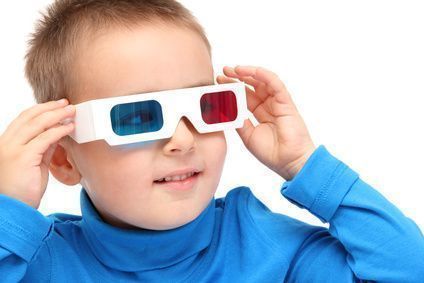Children under the age of six have a vision that is still developing, so being exposed to movies or video games that require the use of 3-D glasses can cause dizziness, headaches and eye fatigue. In some countries, it is prohibited.
International health institutions warn of the use of 3-D devices in children under 6 years of age.
Several international health institutions, including the Spanish General Council of Optician-Optometrist Colleges (CGCOO) and the French National Agency for Health Security (Anses), warn that children under the age of six should not be exposed to the consumption of 3D films and video games, “since the process of assimilating a three-dimensional effect requires the eyes to see images in two different places at the same time, before the brain converts them into a single one, and at those ages the binocular integration process is not properly developed”. Even the Italian Ministry of Health expressly prohibits the viewing of 3D material by children under 6 years of age.
Nintendo 3DS 3-D systems warn in their manual about the danger of being used by children under the age of 6.
It is not the first time that fears have arisen about the effects of 3D technology, which is used in the film, video games, television and computer screens. In 2010, when Nintendo launched its Nintendo 3DS system in 3D, it warned that if used by children under the age of six it could damage their vision. It should also be noted that in the manual of the game console itself, points 2 and 3 highlight the risks of viewing 3D material for children under the age of 6.
Symptoms of “visual dizziness” are usually short-term and disappear when you miss the 3D movie. However, these symptoms may be a sign of significant visual problems, such as amblyopia (lazy eye), strabismus (visual misalignment), or poor convergence (difficulty moving the eyes when looking closely). Regular eye exams with your optometrist and/or ophthalmologist will help diagnose these problems.
Wearing 3-D glasses lowers the quality of the image our eyes see.
What activities are most recommended for young children?
If you have a child under the age of 8, you should consider whether the activities they do are really appropriate for their age. It’s very easy to keep you entertained with a tablet or a smartphone but it’s not the best. Children need toys that are appropriate for their age and development, so it’s a good idea to read the following recommendations for ideal games.
Toys ideal for children under 8 years old according to the American Academy of Pediatrics
There are a lot of recommended toys according to each age group and these are some of the safe bets
6 to 8 years of age
- Toys with balls (soccer, basketball, baseball, etc.)
- Trains
- Quiz games
- Pool table
- Toys by remote control
- Football
- Basic experiments games
From 3 to 5 years old
- Roller skates
- Tricycles
- bikes
- Kites
- Mecanos
- Dollhouses
- Dolls with accessories
2 to 3 years old
- Tricycles
- Basic construction toys
- Musical instruments
- Clay
- Toy phone
